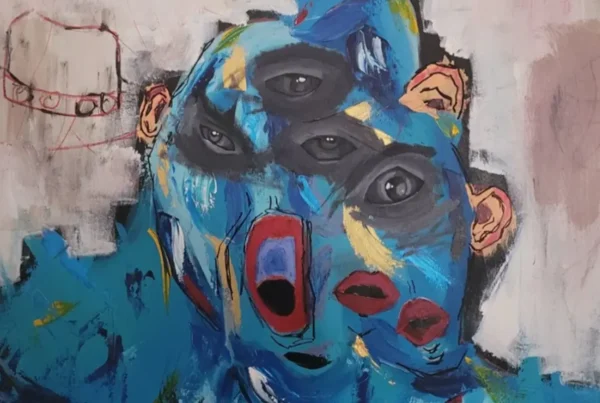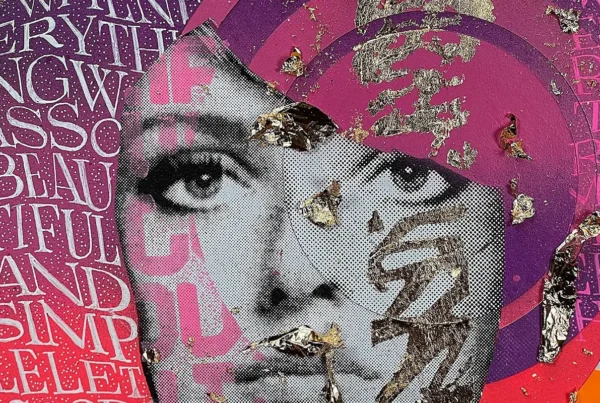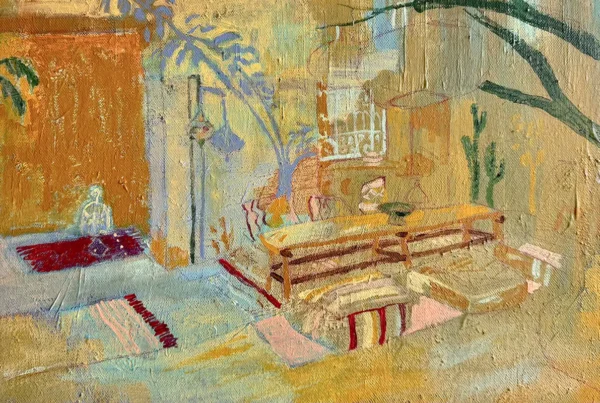A Dual Heritage of Creativity
Born in Nairobi and active both there and in London, Michael Armitage‘s unique bi-cultural existence significantly shapes his artistic perspective. The vibrant, bustling cityscape of Nairobi, rich in cultural and social diversity, serves as a wellspring of inspiration for Armitage. Here, he taps into the everyday dynamics, the political tensions, and the lush natural landscapes that frame his visual narratives. In contrast, London offers him a lens of introspection and distance. This metropolitan hub of global art allows Armitage to situate his Kenyan experiences within a broader, international dialogue, thus enriching his approach to creating art that speaks on multiple cultural frequencies.
Transitioning between these two worlds, the artist finds a unique vantage point to reflect and expand his artistic language. Nairobi’s direct influence is evident in the themes and subjects of his works, which are often rooted in local experiences and stories. London’s contribution, however, lies in its role as a global art nexus that provides Armitage with contemporary artistic trends and a diverse audience. This interplay not only deepens his understanding but also enhances his ability to communicate complex narratives through his paintings, making his work relevant both locally and internationally.
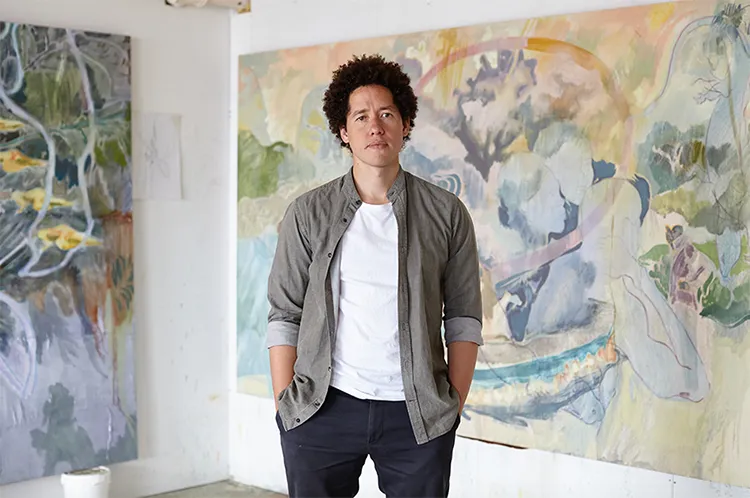
Michael Armitage: The Lubugo Bark Cloth
Michael Armitage’s choice of medium is as distinctive as his artistic vision. Opting for Lubugo bark cloth, a traditional material from Uganda, he connects his practice to East African heritage while challenging conventional painting surfaces. The texture and inherent imperfections of Lubugo—marked by holes and rough textures—demand a unique approach to composition and technique. These physical attributes of the cloth compel Armitage to adapt and innovate, pushing the boundaries of his artistic process in ways that standard canvases would not.
The artist’s use of Lubugo is a conscious nod to tradition paired with a drive for innovation. This choice is not merely aesthetic but is deeply embedded in his philosophy of engaging with and preserving cultural practices through modern art. By integrating Lubugo into his work, Armitage does not just use a medium; he engages in a dialogue with history, transforming the bark cloth into a narrative element that speaks of both past and present. This interweaving of tradition and contemporary practice invites viewers to reconsider the role of materials in art, highlighting how they can convey deeper cultural and historical significances.
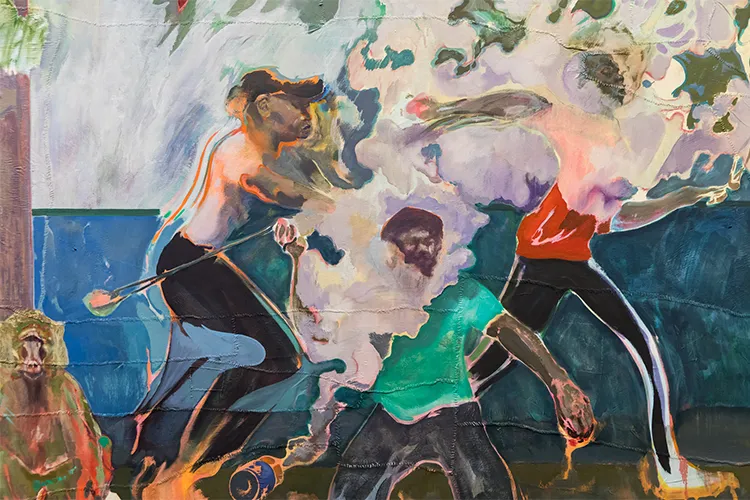
Navigating Societal Narratives
In his artwork, Michael Armitage delves into the tumultuous themes of politics, social inequality, and violence, particularly those affecting his native Kenya. The artist’s approach is both reflective and explorative, using painting as a medium to process and question societal norms and injustices. His notable piece, ‘Necklacing’, exemplifies this as it portrays a haunting scene of mob justice that ties back to his own childhood memories. Through such powerful imagery, Armitage aims not just to depict but to engage—encouraging viewers to ponder the complexities and underlying causes of such brutal acts.
This engagement is subtle yet profound. Armitage’s paintings serve as a catalyst for dialogue, offering a canvas that asks more questions than it answers. The challenging topics he chooses are filtered through a lens that is both critical and empathetic, allowing for a multifaceted exploration of issues. This method fosters a deeper connection and understanding, making his art a bridge between personal experiences and broader societal issues. By bringing these topics into the gallery, Armitage invites an audience that might not otherwise confront such realities to face them in a space that encourages contemplation and discourse.
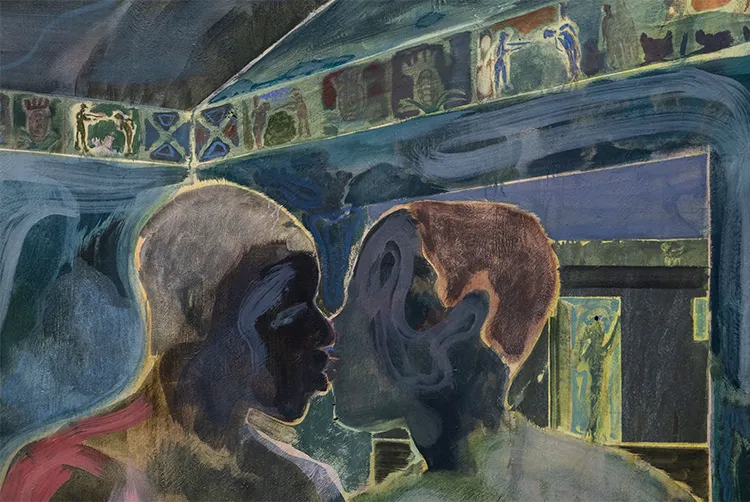
Michael Armitage: Iconography and Symbolism in East African Culture
The rich visual language that Michael Armitage employs is heavily inspired by the iconography of East Africa. His canvases are populated with elements drawn from both rural and urban settings, colonial architecture, and the diverse flora and fauna of the region. These elements are not merely decorative but serve as critical narrative devices that anchor his themes in a specific yet universally accessible locale. Such detailed and culturally specific iconography helps Armitage construct a vivid, layered portrayal of East Africa that transcends geographical and cultural boundaries.
Symbols play a crucial role in deepening the thematic content of Armitage’s work. In his painting ‘Hornbill’, inspired by the tragic events of the Westgate Mall attack, the recurring motif of the Hornbill bird is used to evoke themes of loss and the cyclical nature of life and death. This symbolism, rooted in West African myths, enhances the narrative, adding layers of meaning that resonate on multiple levels with viewers. Through these symbols, Armitage crafts stories that are rich in emotion and meaning, effectively using his art to weave complex, multi-layered narratives that engage audiences far beyond the visual appeal.




